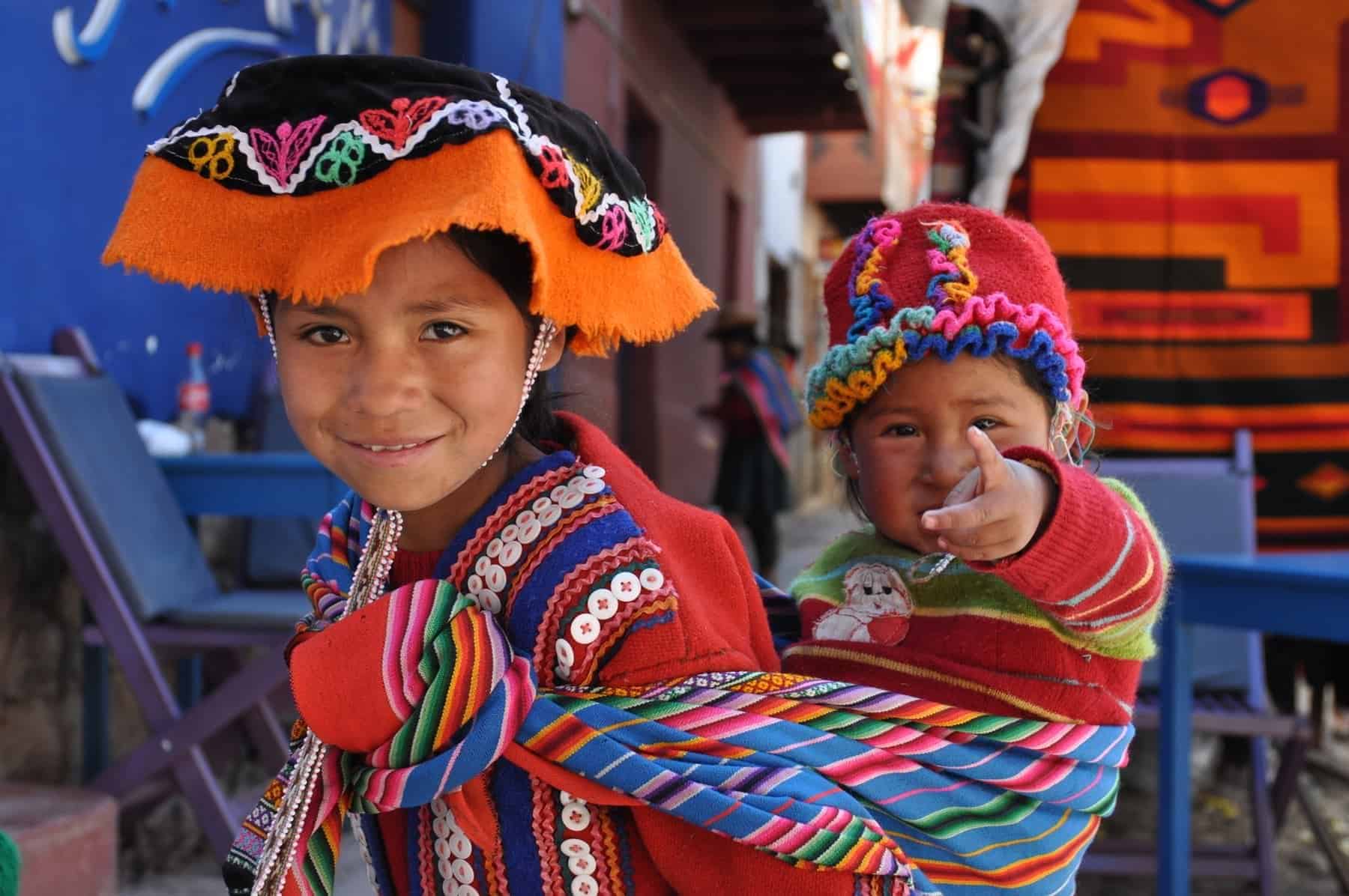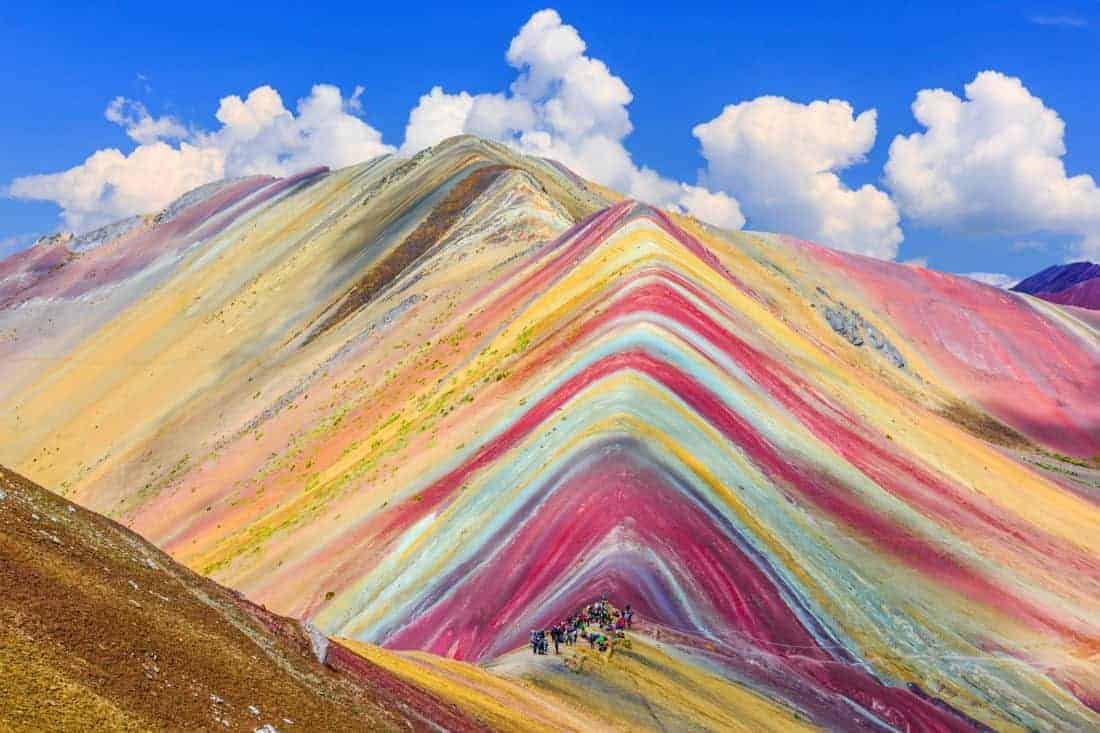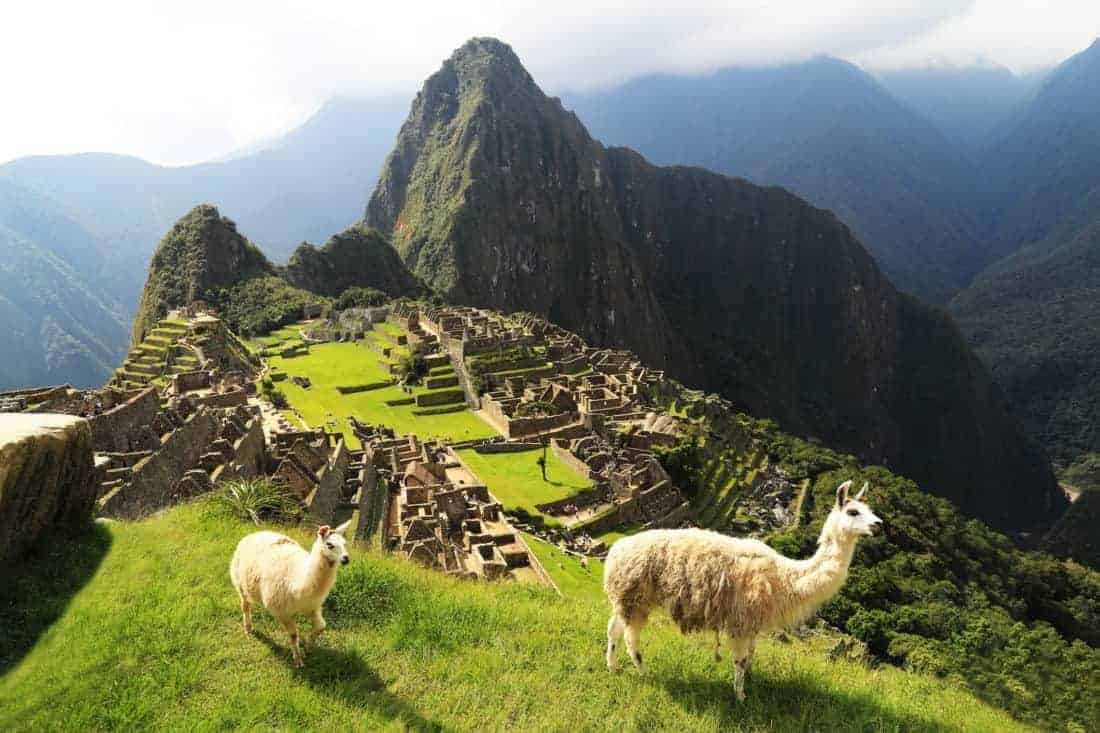Peru from Lake Titicaca to the Ruins of Ollantaytambo
Peru from Lake Titicaca to the Ruins of Ollantaytambo. The amazing country traveled from North to South.
Machu Picchu, we all know or should know for its sheer magican history. If there is a place in South America overflowing with incredible ruins of ancient civilizations and the wealth of fascinating and majestic sightseeing, then surely it is Peru.
Peru is a country in western South America and is located south of Colombia and north of Chile. Peru is a country rich in cultural anthropology and is known to many as the cradle of the Inca Empire.

Peru from Lake Titicaca to the Ruins of Ollantaytambo
What to do Peru
Explore the real Amazon
Peru from Lake Titicaca to the Ruins of Ollantaytambo, from where is where the Amazon begins its life, in Carhuasanta, before traveling the Andes and in the Amazon basin on the other side. Peru is the only South American country where you can experience each of its different forms. See the many travel tips to Peru here.
The Peruvian part of the Amazon jungle is perhaps the most diverse and prolific section of all. And the Manu National Park is one of the most biodiverse areas in the world, with at least 1,000 birds and over 200 species of mammals. Meet caiman and paddle in a canoe along tranquil waterways, lulled by the all-embracing “symphony of green”. Here you can explore the river by boat or get a deeper understanding of the jungle and of people helping in a volunteer project.
Take an excursion to the Colca Canyon
Even if hiking is not your thing, you should not miss the testimony of the beauty of the Colca Canyon. Along with its spectacular scenery, Colca Canyon’s claim to fame is that it is twice as deep as the Grand Canyon in the United States, although the canyon walls are not as dramatic.
The Colca Canyon is said to be one of the deepest canyons in the world, so hikers are advised to go slowly to avoid altitude sickness (the depth of the canyon is over 10,000 feet!).
There are several mountain villages in the Colca Valley, but the most popular is the town of Chivay, famous for its natural thermal springs. A further advantage is that the journey to the Colca Canyon passes through an incredible terraced valley.
Rainbow Mountain Cusco
One of the most magnificent geological features in Peru are the painted hills of Monte Vinicunca, also known as Rainbow Mountain. The sloping color waves that decorate this beautiful hill, ranging from rust red to lavender and turquoise to gold, are the result of minerals and the erosion of sedimentary rocks.
You can enjoy the spectacular views after a day trip or do the Ausangate trek. Both are tiring, but the Ausengate is at another level.
The peaks in the mountainous region of Ausangate in the Peruvian Andes are actually all unusually colored: some are of terracotta, some of lavender, others are of a vibrant turquoise. They are colored by the sediment and atmosphere of the area, unique for its altitude and isolation near the ocean. But none is as wonderful as Vinicunca, also known as Rainbow Mountain, Winikunka, Montaña de Colores and Montaña de Siete Colores.
Despite all its amazing colors, Rainbow Mountain was notoriously hard to find. It is located deep in the mountain range and even the most skilled travelers with experienced guides have reported difficulty locating it. In the past, it took about six days of hiking to reach its peak. Today there are many bus tours from Cusco to the mountain. Due to the increased popularity of the mountain, it has very quickly become the second most visited tourist site in Peru.
Get the most out of Lima
With most travelers irresistibly attracted by Cusco and Arequipa tourist hubs, the charm of the capital, Lima, is often overlooked. With coastline, mountains and jungle just hours from the capital, Lima offers respite and exciting alternatives to the suffocating crowds and bus trips that await you along the Gringo Trail.
Lunahuana offers rafting and vineyards. Tarma’s adobe buildings date back to the pre-Columbian period, with jungle and the deepest cave in South America nearby.
If you get stuck in the capital, don’t despair. There are many things to do, many for free. Every Tuesday, Thursday, Friday and Saturday at 12.30pm you can take a 90-minute tour in the colonial city, declared a World Heritage Site by UNESCO. No reservation is required, just show up at the Plaza Peru at the small fountain.
Put your head in the clouds
The Incas were the first to call the Chachapoyans the “cloud people” and their lair at the top of the mountain, shrouded in fog and covered by thick jungle, came out of an Indiana Jones movie.
The Chachapoyan have left an impressive collection of sophisticated hill-top fortifications and remnants of round houses, but it is the way they carefully preserved their dead that intrigued both archaeologists and travelers.
Several caches of mummies have been found in extraordinarily inaccessible points, high up in the cliffs and underground vaults. Just make sure you pack your Wellies and a machete.
The floating islands of Lake Titicaca. Peru from Lake Titicaca to the Ruins of Ollantaytambo
In addition to having the title of the highest navigable lake in the world, Lake Titicaca is famous for its floating islands. The islands host the Uros, an indigenous people that predates the Inca civilization.
The tour of these floating artificial islands offers an interesting perspective on the life of the Uros. It is a strange feeling the first time you get on an island made entirely of reeds. You can’t help but think that at any time the reeds could give way and you will slip into the icy lake.
There are over 100 floating islands on Lake Titicaca. Most are located 5 km from the shores of Puno. The larger islands host about ten families, while the smaller ones host two or three families.
Paracas National Reserve
The most remarkable thing about Peru is its ever-changing landscapes, from tropical jungles to arid deserts and windy coasts to cold mountains. The Paracas National Reserve shows this contrast. This protected reserve measures 330,000 hectares and has subtropical deserts that abruptly meet the ocean, with huge cliffs and hidden beaches.
This reserve is home to an abundance of marine life, a variety of bird species and boasts one of the richest and most biologically productive marine ecosystems in the world. Within this area, you can also visit various archaeological sites featuring pre-Inca culture or sail to the archipelago of the Ballestas Islands.
The islands consist of steep cliffs and huge rock formations, from which one can see hundreds of sea lions, perched on precarious edges or which lazily sunbathe on the beaches. Other animals that can be seen on the Ballestas Islands are the endangered Humboldt penguins and a number of birds such as cormorants, pelicans and Peruvian tits. If you are very, very lucky, you might even see dolphins frolicking closer to the shore or majestic humpback whales on their journey north for the mating season
Hacienda San José in Chincha
Dark dungeons. A maze of underground tunnels. Secret slave trade. These are the dark tales that accompany a visit to La Hacienda Jose, a large colonial palace turned into a luxury hotel, located in southern Peru in a small town called Chincha. Although located in a small town, this strange and beautiful house deserves a place in this top ten to see in Peru.
Dating back to the 17th century, this huge mansion has hidden stories that take you to the beginning of Afro-Peruvian culture. Established for the first time by Jesuit priests in the late 1600s, they operated the villa as a monastery and used slaves for sugar cane plantations.
When the Spanish colonization of Peru brought new Spanish landowners, heavy taxes were imposed on the slaves. This forced the slave owners to build a gigantic network of underground tunnels leading from the port where the ships docked at the dwelling to secretly carry the strongest and largest slaves from the coast through 17 km long tunnels.
The depictions of the hard life suffered by the slaves can be seen in the paintings that decorate the walls inside this beautiful hacienda, as well as in the underground chambers that were used to punish the slaves.
Q’eswachaka rope bridge
Known as Q’eswachaka, Queshuachaca or Keshwa Chaca, this is one of the few remaining examples of Inca hand-woven bridges, once common in the Inca road system.
Made of braided grass, the bridge extends 118 feet and hangs 60 feet above the rushing river of the canyon. The Inca women braided small and thin ropes, which were then intertwined again by men in large support cables, just like a modern steel suspension bridge. Hand-woven bridges have been part of the trail and roadway system for over 500 years and have been highly regarded by the Incas. The punishment for tampering with such a bridge was death.
Over time, however, the bridges have decayed or been removed, leaving this last testament to Inca engineering. The collapse of the bridges was solved by destroying and rebuilding it in an annual ceremony, originally considered a social obligation under the Inca rule and now preserved as a way to honor their history by the nearby community of Quehue, Peru. This bridge was baptized with a traditional blessing of the Inca ceremonial bridge and is in excellent condition.
National Shrine of Huayllay
It is not much more remote than the bottom of the sea. 75 million years ago, this is where the unique geological features of the Huayllay stone forest began.
Since then some time has passed, but while the position of this rocky spur has changed from the sea floor, its fascinating features have become stranger only when the glaciers have rushed over it, torrential rains and fierce winds have ripped through its many slits and crevices.
Jagged rocky walls, fragments of naturally sculpted stone that pierce the soil somewhere in depth, and impassively disconnected plateaus are just some of the unreal formations that can be experienced here and nowhere else. From a slight distance, it is easy to see where the stone forest takes its name: the densely stacked and tapered rocks seem to be literally a standing forest turned into stone.
Potential visitors will be happy to know that in modern times, the Huayllay Stone Forest is well above sea level, and although it is still quite remote, it can also be visited with the right amount of consumption. Now part of a natural area designated and protected by the Peruvian national government with the umbrella title of Huayllay National Sanctuary, tourism has grown with the smallest increases, but the remote location still makes transport and housing difficult.
Nazca lines
The enigmatic Nazca Lines are found in the arid Peruvian desert, a few hours south of Lima.
This UNESCO World Heritage site was first discovered in the late 1920s by a Peruvian archaeologist. It would have been another 10 years before someone had identified the lines from the sky, making them better known.
The mystery and beliefs surrounding the creation of these giant designs have encouraged conspiracy theories and occasional alien hysteria over the years.
There are about 70 engravings with different designs of animals, flowers and plants, objects and anthropomorphic figures, and over 900 geoglyphs or geometric shapes, spread over 80 km of desert across the plains.
Although there was no unified agreement on why they were made (irrigation systems, sun worship and aliens as theories), this magnificent artistic creation is unrivaled in every sense and is an extraordinary demonstration of ancient culture.
Ruins of Ollantaytambo
Dating back to the reign of Emperor Pachacuti in the 15th century who conquered the region, the city of Ollantaytambo contains some of the best preserved Inca ruins in Peru.
Strategically located in the western part of the Sacred Valley, Ollantaytambo housed the Inca elite of the time. The massive reconstruction efforts undertaken by Emperor Pachacuti following the destruction of the original city produced the architecture and innovations that define the site today. The main attraction of the city is the fortress of Ollantaytambo on the outskirts of the settlement in a section known as Temple Hill. Although originally built for worship, the fortress served as the last Inca stronghold against the Spanish conquerors and has the distinction of being the site of one of the only battles in which the Incas successfully repelled Spanish forces. Not far from the fortress is the Six Monolith Wall, an imposing section of the wall composed of six large sections. The construction of the wall was abandoned before its completion for reasons that remain unknown. Other nearby attractions include the Temple of the Sun and the Princess Baths, both featuring examples of Inca engravings.
The city itself should not be underestimated. A walk through the settlement offers an unparalleled view into the life of the former inhabitants of the city and offers visitors an intimate look at the structure and distinctive houses of Ollantaytambo.
Kuelap Fortress
In Chachapoyas, Peru, the winding rivers and creek beds sculpt the soil, fuel sources for the mighty Amazon River. The few and far between roads and paths scarred a landscape in which ancient civilizations arose and collapsed. Ruins of remote and oasitic stones are hidden under the bromeliads. The Chachapoyas, or “Land of the Cloud Peoples”, holds many mysteries.
Kuelap, a fortress town atop a mountain, rivals all the ruins of the new world and comes complete with lodgings for thousands of residents and a stone wall fortification that reaches 60 feet in height running around the city in circumference.
Kuelap is considered the largest stone ruin site in the New World and is composed of huge stone blocks almost 10 times the volume of the blocks used in the Giza Pyramid.
400 buildings in Kuélap
The fortress of Kuélap consists of huge external stone walls containing over four hundred buildings. The structure, located on a ridge overlooking the valley of Utcubamba, in northern Peru, is about 600 meters long and 110 wide and is thought to have been built to defend itself from Huari or other hostile peoples. Archaeological evidence shows that the structure was built around 500 AD and occupied until the mid-1500s (early colonial period).
Nearby are the “purunmachus” ruins or stone tombs built in the shape of people who would have housed the mummified remains of the royalty of Chachapoyas.
Where to stay in Peru
Inkaterra Machu Picchu Pueblo Hotel is located on the edge of the city and is an excellent example of the best of Peruvian architecture. Traditional buildings house welcoming areas in which to relax, beautifully decorated rooms with working fireplaces and a renowned restaurant.
The Belmond Hotel Rio Sagrado is a small establishment with a choice of luxurious rooms or villas and an extensive list of wellness facilities. And the surroundings make it magical, luxurious and comfortable.
El Abergue is an elegant and comfortable hotel located inside the Ollantaytambo train station, where trains lead directly to Machu Picchu and Cusco. With intimate and rustic rooms that offer a splendid view of the surrounding greenery, it is the perfect starting point for any adventure. There is also a sauna to relax!
Titilaka is a pleasure, but it could be worth it, the location, which directly overlooks Lake Titicaca, is incredible, and the design of this hotel is superb. It really looks like this is the border of the world. And in a sense it is.
Inkaterra La Cason is an 11-room hotel in a beautifully converted colonial building. If you are interested in the history of this city, this is the place to be. Decorated with antiquities dating back to the times of the Spanish Empire. The Peruvian restaurant is exceptional. And you’re just a two-minute walk from Cusco’s cathedral.
Antigua Miraflores, a charming traditional structure of 77 rooms with beamed ceilings, tiled floors and a relaxed Peruvian restaurant. Great to see the slights.
El Retablo
Set in a restored historic building, this charming B&B is located near the historic center of Cusco. The interiors feature traditional “retablo” motifs hand-painted by local artisans, as well as hand-woven tapestries and cozy linens; book a luxury suite for a balcony overlooking the city. An inviting hotel.
Countries to visit in South America
Complete travel information and travel inspiration
- Visit Argentina
- Visit Bolivia
- Visit Brazil
- Visit Chile + Chile travel tips
- Visit Colombia
- Visit Peru
- Visit Uruguay
- Visit Venezuela (Angel Falls, highest waterfall in the world)






